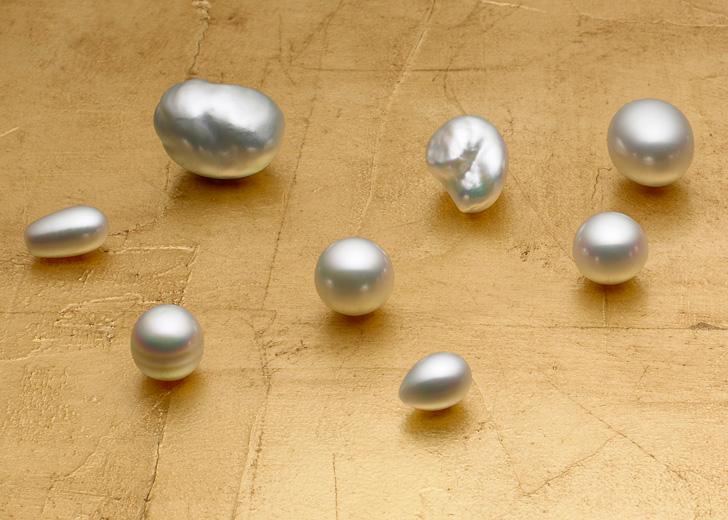Partnering with nature

Partnering with Nature
Pearls are one of Nature’s most treasured creations – the only gem produced by a living organism. But in the wild, perhaps only 1 in 10,000 pearl oysters will produce a quality pearl. Since pearls were first cultured in the twentieth century, decades have been spent refining the art. Today, with man’s gentle influence, Nature is reliably producing cultured pearls of superior quality.
For more than 50 years, Paspaley has been producing pearls of exceptional beauty through a respectful partnership with Nature. As the first company to recognise the frailty of the rare giant Pinctada maxima oyster, it has been Paspaley’s mission to nurture these solitary and sensitive creatures in waters untouched by pollution.
Dotted along more than 2500 kilometres of mostly uninhabited coastline in north-western Australia, Paspaley’s remote farms provide optimal conditions for the Pinctada maxima to produce the world’s finest pearls – pearls that will never need to be enhanced by artificial means.
Pearling within the natural environment
Paspaley currently operates around 20 farms in an area stretching from the Cobourg Peninsula north-east of Darwin to Dampier in Western Australia. These isolated bays were chosen for the protection they provide from seasonal cyclones and, most importantly, the quality of their pristine waters.
Many of Paspaley’s farms are located in or adjacent to National Parks, Marine Parks or Aboriginal lands. Regardless of location, all farms are treated as flora and fauna reserves, and areas or items of cultural significance to Aboriginal people are never interfered with.
Paspaley operates under a Pearling Code of Practice designed to minimise environmental impact. While pearling has passed the Ecologically Sustainable Development requirements of Australia’s Federal Biodiversity Act, the world’s leadingSouth Sea Pearl producer continues to ramp up its focus on environmental issues and ecological sustainability.
The company’s “leave no trace” environmental policy ensures that all waste materials are removed by ship to the home ports of Broome or Darwin, recycling as much of the material as possible.
Ship-based farms for minimal environmental impact
Paspaley’s modern ships are a cornerstone of the company’s pearling operations. These floating laboratories have revolutionised pearl culturing.
No longer is it necessary for oysters to be removed from their native habitat for cleaning and treatment; rather, pearl technicians can now be taken to the oysters, minimising the time they are out of the water and greatly decreasing the risk of trauma.
Until the 1970s, most pearlers used traditional gaff-rigged wooden pearling luggers, and divers faced the dangers of the deep in cumbersome hard-hat diving suits with air pumped through hoses from the boat above. In 1973, Paspaley commissioned Australia’s first modern purpose-built pearling ship, the Paspaley Pearl. At the time, it was the largest fibreglass vessel in Australia.
Today, the tradition of innovation continues aboard the mother ship Paspaley IV, a 52 metre ship with a crew of 55.
The simple appearance of Paspaley’s ship-based pearl farms in the remote waters of the Kimberley is deceptive. Each farm represents a complex combination of logistics and pearl husbandry requirements designed to provide maximum care and efficiency to the pearl oysters and the pearl farm environment. The floating farms are showpieces, not so much for their display of technological virtuosity but for the way they subtly merge into the surrounding environment.
They are material reflections of Paspaley’s deep respect for Nature, and of the lengths the company goes in producing the world’s finest quality pearls.